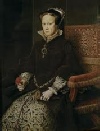

Holy Trinity
Amblecote
The Book of Common Prayer
It has been claimed by some writers that the Bible and the Book of Common Prayer are amongst the greatest works of English literature. The two are in many ways intertwined as the Bible is found within the Prayer Book in that the table of lessons arranges for the Bible to be read through, on a daily basis, once each year.
Certain other writers have claimed that it originated from the ideological struggle of the English Reformation.

Henry VIII is often credited with reforming the English Church but by the time of his death in 1547 the English Church was still basically Catholic; but Catholic with a difference. Even today the Anglican Church claims to be reformed Catholic rather then Protestant. Henry had started to introduce reformist ideas but the Mass was still Catholic and always in Latin.



The 1549 Prayer Book
Henry was succeeded by his sickly son Edward VI and during his short reign Archbishop Thomas Cranmer produced the First English Prayer Book in 1549 which was in English.
The Reformed Prayer Book of 1552
Pressure was put on Cranmer to produce a genuinely reformed Prayer Book which he did (possibly with the collaboration of a number of reformists) in 1552.
The Reformed Prayer Book was only in use for a few months as Edward VI died in 1553 when he was succeeded by his half sister Mary a staunch Roman Catholic.
Mary I died at the age of 42 in 1558 and the following year Elizabeth I reintroduced the 1552 Prayer Book with a few modifications.


Elizabeth I
Henry VIII
Edward VI
Cranmer
Mary I
In 1604 King James I ordered more changes to the Prayer Book of 1552 which had been produced under the editorship of Archbishop Thomas Cranmer.

Book of 1559
After the English Civil War, during the reign of Charles II, another major revision of the Book of Common Prayer was produced in 1662.
This edition has remained the official prayer book of the Church of England (or Anglican Church) to this day.
Elements from the Book of Common Prayer have also been borrowed and included into the prayer books of other Christian denominations including those of the Lutheran, Methodist and Presbyterian Churches.
Common Worship
In the year 2000 an alternative service book, Common Worship, was produced which is, in the main, used at Sunday worship services in English parish churches.
In its preface it reads The Book of Common Prayer remains the permanently authorized provision for public worship in the Church of England, whereas the newer liturgies are authorized until further resolution of the General Synod. This combination of old and new provides for the diverse worshipping needs of our communities, within an ordered structure which affirms our essential unity and common life.



James I
Charles II
Book of 1662
